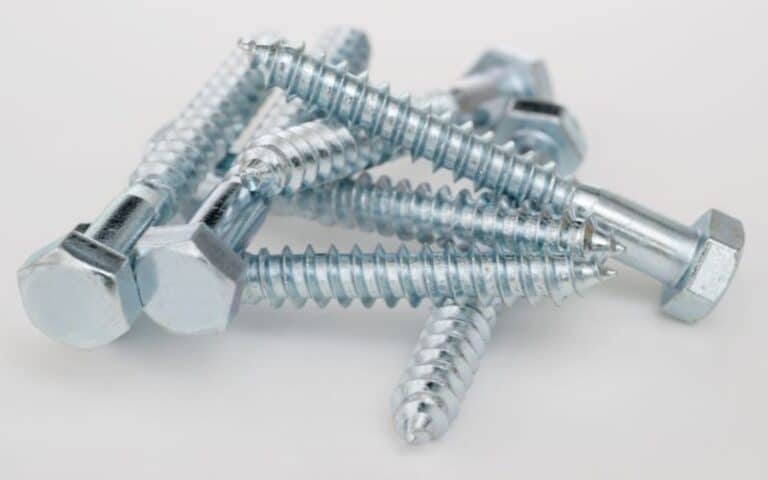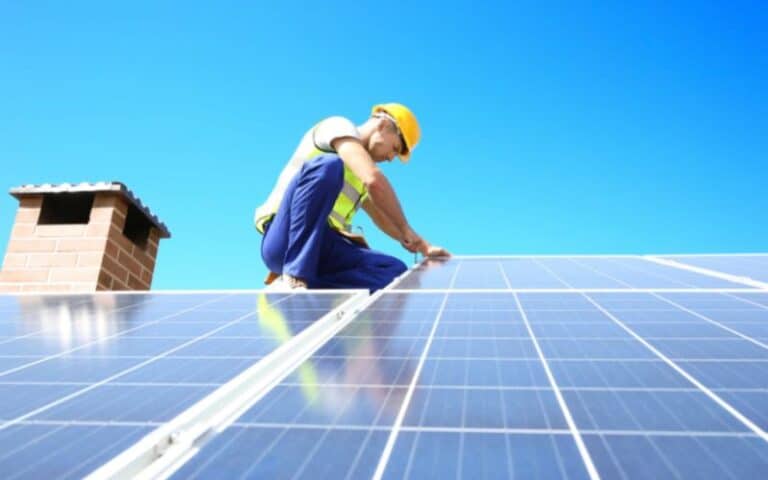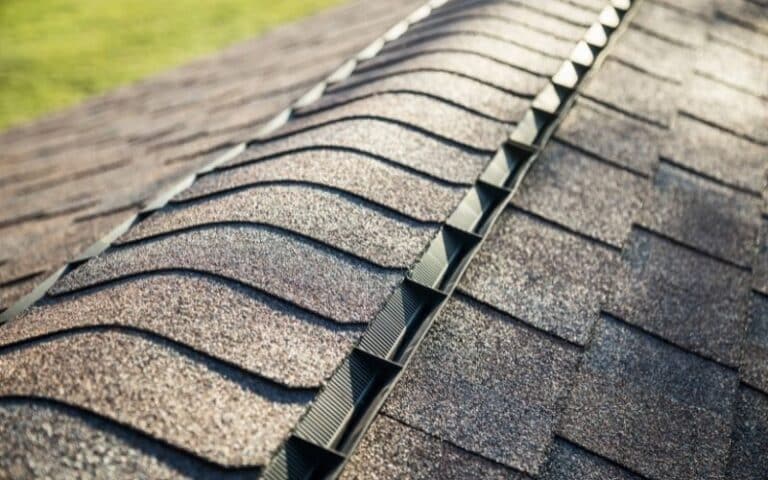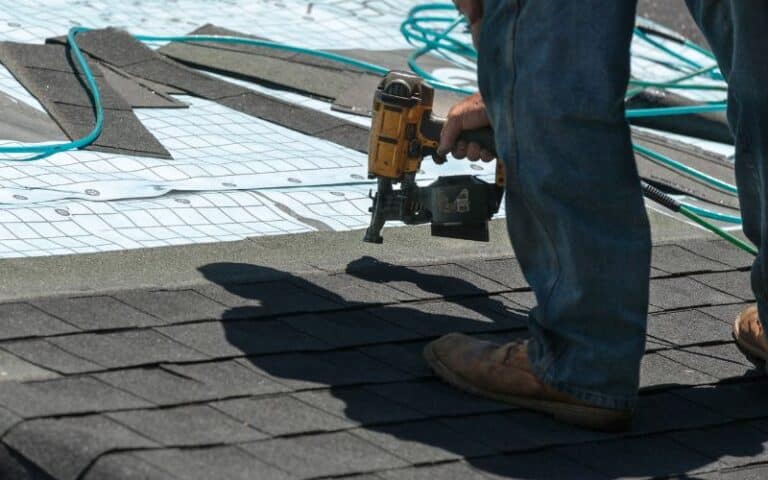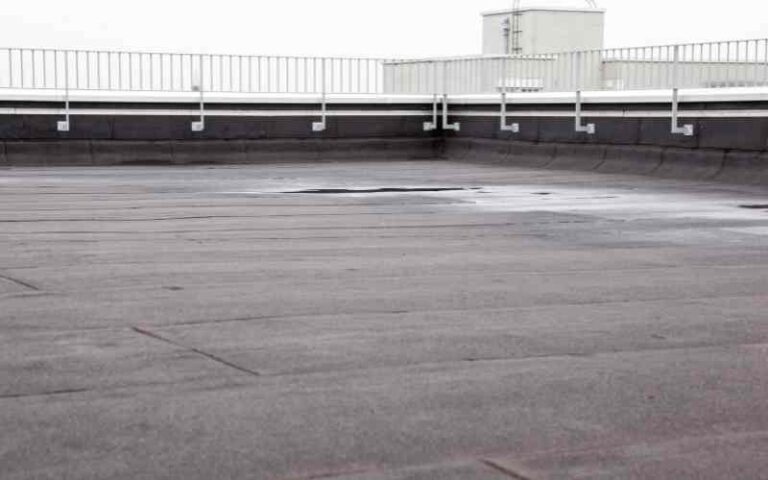Many roofs sometimes have black tar, especially tar and gravel roofs.
However, if you’ve been to some building construction sites, you would see that gravels are added on rooftops even if they are not older models of roofs, and that brings us to the question, why do constructors install gravel stones on roofs?
There are many reasons why contractors add gravel stones on top of flat roofs; some of the common reasons are to protect the underlying layers of the roof and to weigh down the building materials common with single-ply flat roofs.
Ready for a Roofing Quiz?
Why Do They Put Stones on Black Roofs?
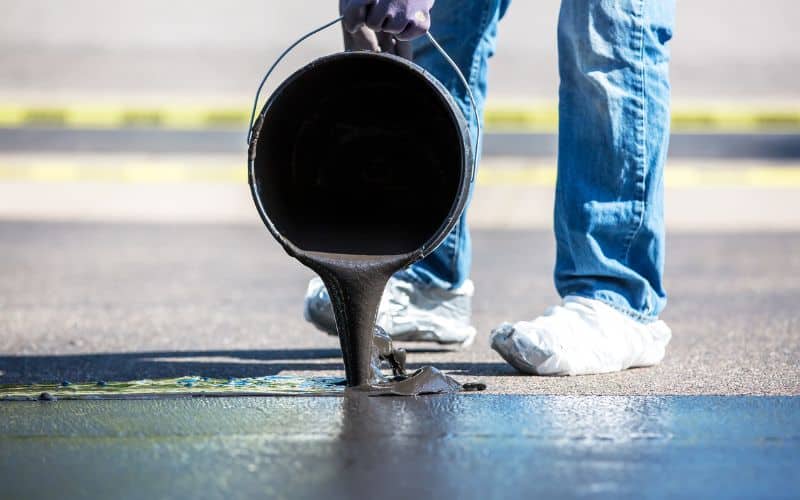
Different gravels are on flat roofs and various other roof types for different purposes.
Some of the reasons why you install gravels on roofs include;
#1. To Protect Build-Up Roofs
A lot of people refer to Build-up roofs as tar gravel roofs. In this case, you combine the alternating layer of the roofing felt, usually fiberglass and hot asphalt, to create a long-lasting roofing system.
After you coat the final asphalt layer on the roof, you then apply a layer of gravel to it to protect it from several elements like poop from birds and ultraviolet rays from the sun.
The top layer of the asphalt, known as the flood cat, helps hold the gravel in place because as soon as you lay it, you do not take too much time before laying gravel stones.
In addition, the layer of gravel that you place on the roof helps serve as a waterproof to give your roof surface a longer life and prevent degradation and cracking.
The last layer of asphalt helps provide insulation and absolute protection for a flat roof; the gravel you apply afterward is like an extended layer.
Although it is gravel, some people use pea gravel or mineral granules to add beauty to it.
Apart from the reasons mentioned above, the gravel holds and releases heat from home, prevents birds’ natural debris, and provides a better foot grip when working on the roof.
#2. Provides Extra Protection for the Roof Against UV Rays
The best gravel installment you can use for this purpose is the ballast roofing gravel system. Ballast is a different gravel style you can apply on single-ply roofing systems.
Although one of the significant aims of ballast is to weigh down the roofing materials to lay correctly, it also protects your sun from UV rays.
Ballast is required for a single roofing system because the materials of this roofing system are not self-adhered or sealed in any way, so you would need to weigh down this roof type on your own to protect it from strong winds.
However, it would help if you didn’t assume there are no differences between the ballast system and the BUR system.
A ballasted roof is cost-effective because you would not need to seal its layers together, and you wouldn’t be paying too much for manual labor.
Like the BUR system, the ballast roof absorbs heat and prevents the heat from beating the actual roofing material used.
Also, when maintaining, manual laborers find it easy to move on the roof since its stones are loose.
Pros And Cons of Putting Stones on Black Tar Roofs
Even with the numerous advantages the tar gravel roofing system provides us, it also comes with a few disadvantages.
Some disadvantages of using the tar gravel roof system include;
#1. Weight
Tar and gravel roof adds noticeable weight to building structures because after you apply the tar gravel and then the top layer of the gravel, you can now check the thickness of your roof.
You would see that your roof would be about an extra 5-10 lbs. per square heavier than before. This added weight can strain your roof and the underlying concrete.
#2. Maintenance Difficulty
When you cover your roof with gravel, you cannot see the underlying layer, making every future maintenance that you would carry out on the roof almost impossible or complicated.
For instance, if there is a leak in your roof, you might know where the leak is coming from, but your contractor would have to remove the entire layer of gravel from the surrounding area to find the particular leak spot.
Not only does this waste time, but it also costs extra than if you had used a polyurethane roofing material.
In addition, your contractor can remove the gravel from that area with a vacuum cleaner or a shovel.
#3. Stones Eventually Breakdown
Due to the weather, traffic, and time, the gravel stones used on these roofs start to break down and eventually become less effective.
So, since these gravels were added to your roofs to protect them from UV rays and wear from weather, once the layer eventually breaks down, the crucial layers of your roof start to wear off and damage.
#4. Foot Traffic Damages
Many commercial roofs always have troubles from roof traffic, either from window maintenance or any other maintenance team.
So, if you allow these commercial cleaners on your tar gravel roofs, there is a higher chance that it starts breaking down with time due to foot traffic.
So, if you must let people on your roof, ensure that there are dedicated pathway-like areas they can walk on.
#5. Prone to Molding
When you install a flat roof, it is inevitable that after rainfall, water is on the roof for some time.
However, unlike when you install a polyurethane roof with specific pathways through which the water can pass, you do not have much on flat roofs.
So, when your flat roof traps water, you have no choice but to let the water evaporate, and then your roof dries off, making your roof susceptible to molds.
Some of the advantages of installing tar gravel on roofs include;
- This roofing system helps protect your roof from ultraviolet radiation, which could harm the top layer of your roof.
- When installing this roofing system, you protect your roof from debris and waste from birds that perch on it or fly past it.
- In maintenance cases, it provides your contractor with a better grip when you need to work on your roof.
| Pros Of Gravel on Tar Roofs | Cons Of Gravel on Tar Roofs |
|---|---|
| Gravels provide your roof with a better foot grip | Gravels start to wear and damage over time |
| Gravels help protect the roof from UV rays | Tar gravel roofs make maintenance on the original roof layer difficult |
| Gravels on your roof help protect the sensitive layers from debris | Due to the harsh weather, your stones start to crack over time |
| Gravels on your roof help absorb heat from the sun and prevent it from getting into the home | Molds most likely appear when your roof traps the water for longer. |
What Type of Stones Are Best for Black Tar Roofs?
You can use two common stones for roofing; slate and gravel. Slate is an ideal type of roof stone that has a tile-like appearance.
A slater charges high for installing this rock on your roof due to its pliable nature, ability to be split into thin layers, and then its shiny and neat appearance.
The best advantage you have with slates is that they are highly malleable and can last long without being affected by natural occurrences.
So, if you want a long-lasting roof that can tolerate elements of nature for a long time without any potential damage, then you should install this roof.
Gravels are suitable for the outer layers of flat roofs. It is applied after the tar layer to protect your roof against debris, animal waste, and UV rays and protect the inner layer from harsh weather conditions.
Even if this roof type is not as complex as the slates, it will do an excellent job.
Conclusion
As a homeowner, applying gravel stones on the top of your flat roof system is essential because it protects It from external factors.
When these gravels are applied, it would be challenging to work on the maintenance of your roof.
It would help if you didn’t bother because, with the gravel on, you wouldn’t even need to bother much about repairs. After all, it is guaranteed to protect your roof for an extended period.

